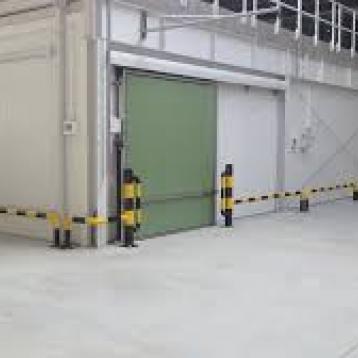In modern conditions is enormous inter-state and internal trade flows - it is impossible to underestimate the importance of storage facilities, seeing it as secondary to the production. Classification of warehouse premises contributes to the rational organization of logistics and improves the quality of material flows and therefore increases profit.
As noted in previous publications, in Ukraine there is no document that would enormobowl classification of warehouse property at the state level.
The main factors on which was based the classification given in previous publications(article 1, article 2) – structural features, technical equipment, the location of the warehouse, organization of the warehouse process.
But the specifics of warehouse complexes lies in the fact that some of its characteristics must correspond to one class and another, no less important, a different class. And options when the higher priority features correspond to a lower class, cannot be excluded from the practice of stock market.
Warehouses, in fact, are the accumulators of material resources, which are needed in order to offset the fluctuations in supply and demand, and also to synchronize the speed of the flows of raw materials and finished products. Material flow at all stages of its movement from the source of raw materials to the final consumer product, requires specially equipped places for storage and redistribution of stocks. It can be your own company's warehouses rented warehouses or warehouses of the logistics operator, which are the storehouses of responsible storage. Thus, the composition is one of the important elements of the supply chain. Given this, there is currently a large number of different types of warehouses that are used to solve various logistical problems.
In this article we propose to group warehouses for:
1) functional purpose.
- Production are placed in enterprises for storage of raw materials, components and finished products.
- Transit and transshipment – located near railway stations, ports, airports, road terminals and are used for short term storage of cargoes during transshipment between different modes of transport.
- Customs are used to store imported or to goods in transit awaiting customs clearance.
- Wholesale distribution warehouses that carry a supply of trade (commodity) networks.
- Retail - warehouses trading companies.
- Reserve warehouses, which provide storage reserves in case of emergencies.
2) special characteristics of the products is maintained.
Stock can be created specific conditions for storing certain goods – for example, temperature, humidity, conditions for the localization of the dangerous effect on the environment and the like.
- ADR-warehouses – storage facilities for dangerous goods and materials, i.e. substances that require special storage conditions.
- Pharmaceutical warehouses – warehouses with additional requirements to the ventilation and temperature control, which requires pharmaceutical products group.
- Cold storage warehouses specialized warehouses that take into account the needs of clients to the conditions of low-temperature storage of goods, providing temperature (in the case of using multi-temperature equipment) -25°C to +15°C, and the like.
3) structural features.
- Closed – located in separate rooms.
- Semi-enclosed design provides one, two or three walls.
- Open – are placed on specially equipped platforms.
4) depending on the degree of mechanization of warehouse operations.
This indicator detects the following storage types:
- not mechanized;
- warehouses with comprehensive mechanization;
- automated;
- automatic.
5) measure of flexibility.
A wide range of cargo that is saved is an important measure of the composition. Release:
- dedicated warehouses that are designed to hold only one type of cargo;
- warehouses with mixed range, where can be stored several types of cargo;
- universal warehouses adapted for most types of cargo.
A large number of different types of warehouses is a consequence of the need to address a wide range of tasks in many sectors of the economy and daily life of mankind. But the undeniable trend in the modern development of warehousing is compliance with modern requirements on the organization of the warehouse process and environmental regulations, trained staff.

